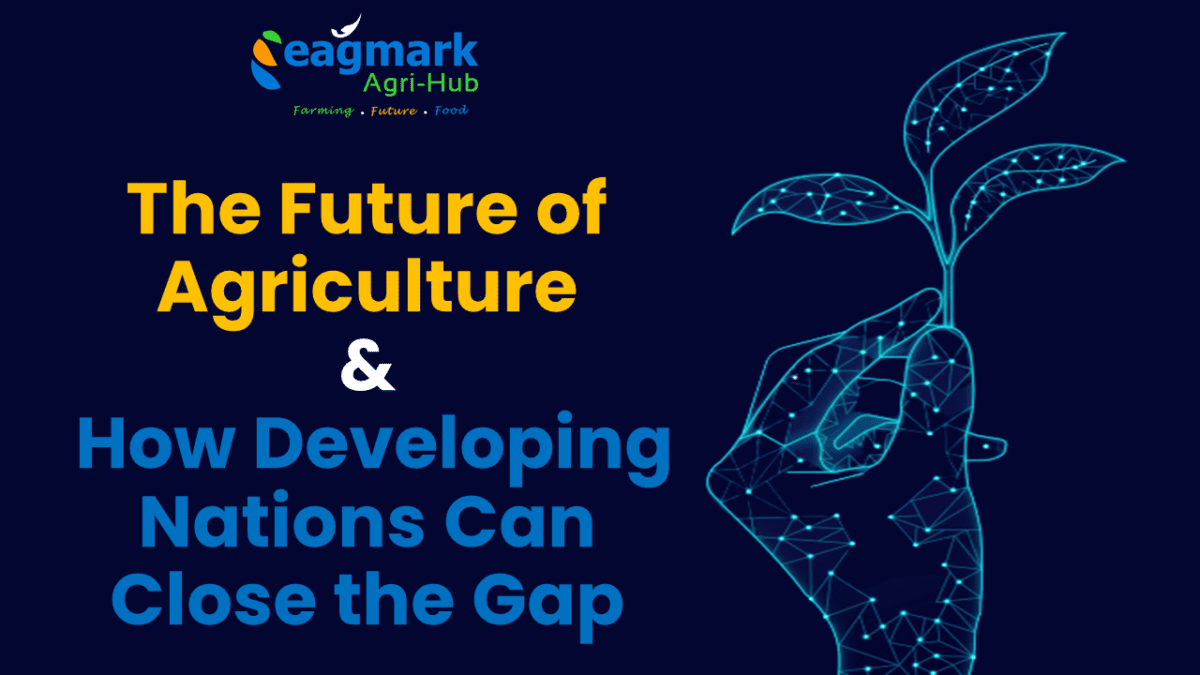The Future of Agriculture: How Developing Countries Can Close the Gap

As the world becomes increasingly interconnected, the global food industry has undergone significant changes. In many developed countries, improvements in infrastructure, technology, and farm yields have led to a decline in the percentage of the population working in agriculture. However, in many developing countries, the situation is quite different. because of lack of infrastructure and technology which has made it difficult to increase efficiency and reduce the labor needed in food production.
On average, over the last few decades, about 40% of the world’s population was employed in some agricultural-related industry. This includes not just farmers, but also workers in food processing, transportation, and distribution. However, according to data from the World Bank, the percentage of people working in food production has declined steadily over the past 2 decades.
This decline is primarily driven by the development of infrastructure, technology, and improvements in farm yields. As these factors have improved, it has led to the need for fewer people to labor as farm workers. This is especially true in developed countries, where mechanization has replaced much of the manual labor once needed on farms.
Globally, about 1 billion people still work in agriculture, which represents about 27% of the population. This is down from 44% in 1991, indicating a significant shift in the industry.
Despite this decline, food production remains a critical industry that supports the livelihoods of billions of people around the world. And as the global population continues to grow, it will be imperative for countries to find ways to sustainably and efficiently produce enough food to meet the needs of their citizens. This may involve a combination of traditional farming methods and the use of technology and innovation to increase efficiency and reduce the labor needed to grow and process food.
While the decline in employment in the food industry may be due in part to technological advancements and improvements in infrastructure, it’s important to note that this trend is not uniform across all regions. In fact, in many developing countries, the percentage of the population working in agriculture has remained relatively stable or has even increased in recent decades.
This is due, in part, to the fact that these countries often lack the infrastructure and technology that has allowed developed countries to become more efficient in food production. As a result, much of the farming in these countries is still done by hand, and there is a greater need for labor.
Additionally, many developing countries rely heavily on agriculture as a major contributor to their economies. In these countries, improving efficiency in food production can be a key factor in reducing poverty and promoting economic growth.
The Transformative Changes Needed
There are a number of steps that developing countries can take to improve their food production and catch up with the rest of the world. Some of these steps include:
1. Investing in infrastructure: Improving infrastructure, such as roads, ports, and storage facilities, can make it easier for farmers to get their products to market and increase efficiency in the food supply chain.
2. Adopt new technologies: By investing in new technologies, such as irrigation systems, seed varieties, and fertilizers, developing countries can increase their crop yields and improve the efficiency of their food production.
3. Promote research and development: Supporting research and development can help countries identify new ways to improve food production and address challenges such as climate change and pests.
4. Encourage education and training: Providing education and training to farmers can help them learn new skills and adopt best practices that can increase the efficiency and sustainability of their farming operations.
5. Develop supportive policies: Governments can implement policies that support the growth of the agricultural sector, such as providing access to credit, land, and other resources.
6. Foster public-private partnerships: Public-private partnerships can bring together the resources and expertise of the private sector with the goals and needs of the government, helping to accelerate progress and promote sustainable development.
7. Encourage innovation: Encouraging innovation and entrepreneurship can help developing countries identify and pursue new opportunities for improving food production. This could include supporting startups and small businesses that are working on solutions to challenges in the agricultural sector.
8. Promote sustainable agriculture: Adopting sustainable agriculture practices, such as conservation agriculture and integrated pest management, can help developing countries increase their crop yields while also protecting the environment and preserving natural resources.
9. Foster collaboration and knowledge sharing: Collaborating with other countries and sharing knowledge and expertise can help developing countries learn from the experiences of others and identify best practices that can be adapted to their own situations.
While the road ahead may not be easy, it is possible for developing countries to close the gap and join the rest of the world in building a more sustainable and efficient food industry. By working together and embracing new ideas, we can create a brighter future for everyone.



